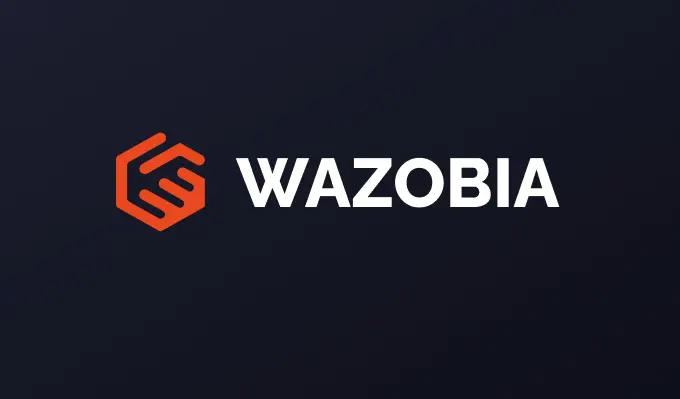
It is no surprise that many companies have increasingly adopted agile methodology in building and delivering products efficiently. According to a report by goRemotely, over 71% of software companies have interacted with agile. This, without a doubt, tells us that agile is the way forward.
Working with agile also means working with the right tools. There is no scarcity of these tools as the market is filled with many, but finding the right tools for your team may be challenging. This is because there are many factors to consider before selecting the right tools for your team.
Some factors that affect choosing agile tools include:
Find some of them listed below:
Team size
The size of your team is a major factor to consider when choosing agile tools. Some tools are better suited for small teams, while others can scale to support large teams. If you have a small team, you may want to choose a tool that is easy to use and does not require a lot of upfront setup. If you have a large team, you will need a tool that can handle a large number of users and can be used to manage complex projects.
Ease of use & compatibility
Another important factor to consider is the ease of use and compatibility of the agile tool. The tool should be easy to learn and use for all members of your team, regardless of their technical expertise. It should also be compatible with your team's existing tools and systems.
Pricing
Agile tools can range in price from free to hundreds of dollars per month. It is important to choose a tool that fits your budget and needs. If you are just starting out with agile, you may want to choose a free or low-cost tool. As your team grows and your needs change, you can upgrade to a more expensive tool.
Agile framework adopted
Different agile frameworks have different requirements for tools. For example, if you are using the Scrum framework, you will need a tool that can support sprint planning, task tracking, and burndown charts. If you are using the Kanban framework, you will need a tool that can support swimlanes, work in progress limits, and cumulative flow diagrams.
Highlighted below are some of the top tools for an agile team. This article will guide you on the right tool for your team after considering the aforementioned factors.
JIRA
JIRA is a proprietary issue tracking product developed by Atlassian that allows bug tracking and agile project management. It is undoubtedly the most popular agile tool for software development teams. This is because JIRA has a vast pool of features that make it easy for agile teams to collaborate and monitor projects.
Because of its endless feature capabilities and easy customisation, it is required to be set up in the right way for teams to get the best out of it.
JIRA Features include:
- Scrum boards
- Kanban boards
- Roadmaps
- Robust agile reporting features
- Automation
- Customisable workflows
Pricing: Free to $14.50 monthly. Enterprise plans are also available.
TRELLO
Trello is also a popularly known tool for agile teams. It is best suited for the Kanban framework because of its visualisation. It uses lists to represent the columns and cards to represent tasks. You simply just move the cards between the columns to show progress. It is a straightforward tool to use.
It is best suited for small teams who simply want to track tasks. However, you may want to look at another tool for larger projects as this isn’t the best option.
Trello features include:
- Easily customisable boards
- Drag-and-drop editing
- Custom fields
Pricing plan: Free to $17 monthly.
ZEPEL
Zepel is an excellent project management tool for software development teams. From Kanban to scrum boards, Zepel is an easy-to-use tool and easy to understand. It is ranked as the easiest to use project management tool on G2 for 2021.
It is a good alternative to other tools that require heavy customization before its features can be maximized. In addition, it is suitable for both small and large teams, ranging from 2 to 200 members.
Zepel features include:
- Deep integrations with GitHub, Bitbucket, GitLab, and more
- Scrum board
- Customizable Kanban board
- Effortless feature planning with document interface
Pricing plan: Free to $5 monthly. Streams are available at $49 monthly
CLICKUP
Clickup is a cloud-based platform that is best for task management among other things. It is also known for good process management. With the aid of user-friendly templates, Clickup makes project management easier.
After several reviews, it can be said that Clickup isn’t the best tool to use on a project level but it delivers effectively well on a task level.
Clickup features include:
- Efficient task management
- Automation
- Multiple views including workflow views
- Advance filters and integrations
Pricing plan: Free to $9 monthly.
GitHub
GitHub is the largest code host in the world, with 40 million users and more than 190 million repositories as of January 2020. Therefore, it is most likely that your development team is already using GitHub to host and collaborate on source code.
GitHub project management allows you to plan, track, manage and fix issues without complicating workflow. In addition, other project members can follow updates on your work.
GitHub project management features include:
- Switch between multiple views: boards and table
- Tailored reporting
- Issue linking to pull requests
- Automation
Pricing: Free to $4 monthly.
While these tools mentioned above are great for agile teams, it sometimes isn’t enough for smooth collaboration. It takes more than that. Although some of these agile tools already make room for efficient collaboration, you can also employ some tools highlighted below.
CONFLUENCE
Confluence by Atlassian is a wiki and collaboration tool designed to make working together easier. It is that tool that allows you to organise everything in one place. Perhaps your team is already using Jira issue-tracking software; you may want to consider integrating Confluence.
With Confluence, team members can discuss work, record decisions, collaborate as a team, and so much more.
Confluence is very much fitted for large companies in terms of organisational size. However, small to medium companies may also use Confluence.
Pricing: The pricing of Confluence depends on the number of users or members in a team. It ranges from the free plan to $10.50 per user, billed monthly.
GOOGLE DOCS
Although Google Docs is popularly and commonly known as a word processor and a document editor, it is also a very helpful tool to allow agile teams to collaborate. Google Docs enables individuals and teams to access, work, and collaborate on documents in real-time, but it doesn't empower you to manage projects from end to end.
You can also take advantage of already made project management templates. It saves time having to create one from scratch. Also, Google Docs can be integrated into other tools such as Slack, Confluence, and many others.
Perhaps the only limitation of Google Docs is that it requires the user to have a Gmail account to be able to access its services.
Pricing: Free
SLACK
Many agile teams around the world love Slack for instant messaging and rightly so, it is justified. Slack is a very powerful messaging and communication tool that allows teams to organize conversations into channels or specific topics.
In addition, users can easily find information within the searchable archive, and file sharing allows teammates to actively collaborate in real-time to reduce response times.
Agile teams also love Slack because it allows for integration with other tools. With over 2400 tools in the Slack app directory, you can be sure that the tools employed in your team are right there with you.
Pricing: Free to $12.50 monthly. Enterprise grid plan also available
ZOOM
Zoom is the most popular video conferencing software. It connects people from across the world. We live in an agile world where change is inevitable. Constant change requires constant communication and collaboration.
This involves communicating with team members and stakeholders across different levels.
An agile team can use Zoom to set up different meetings -Scrum ceremonies: sprint planning, daily standups, retrospectives, and sprint demos.
Related post
Recent Posts
Need help with a project?
© Wazobia Technologies 2025
Powered by:



.jpg_xZXBLo?tr=w-1500,cr-0.0.1500.840)
